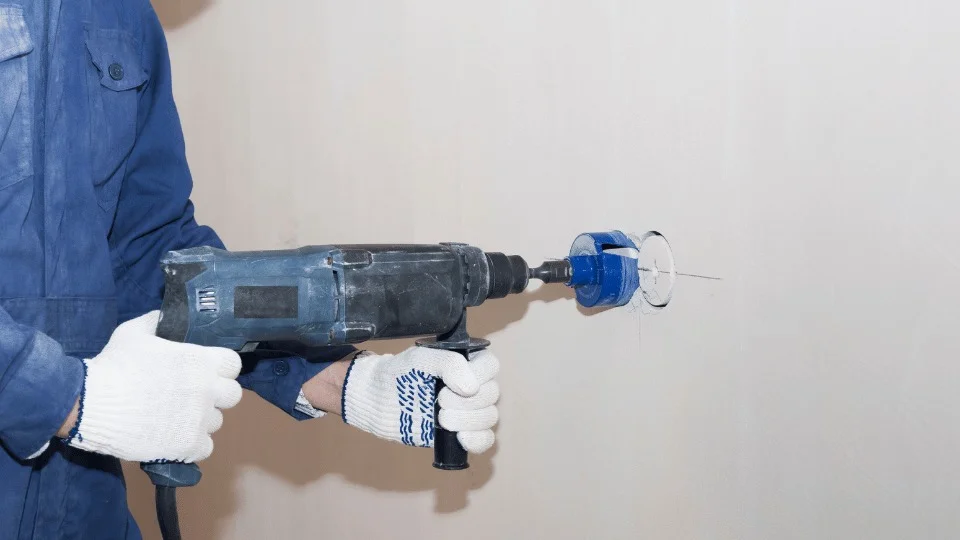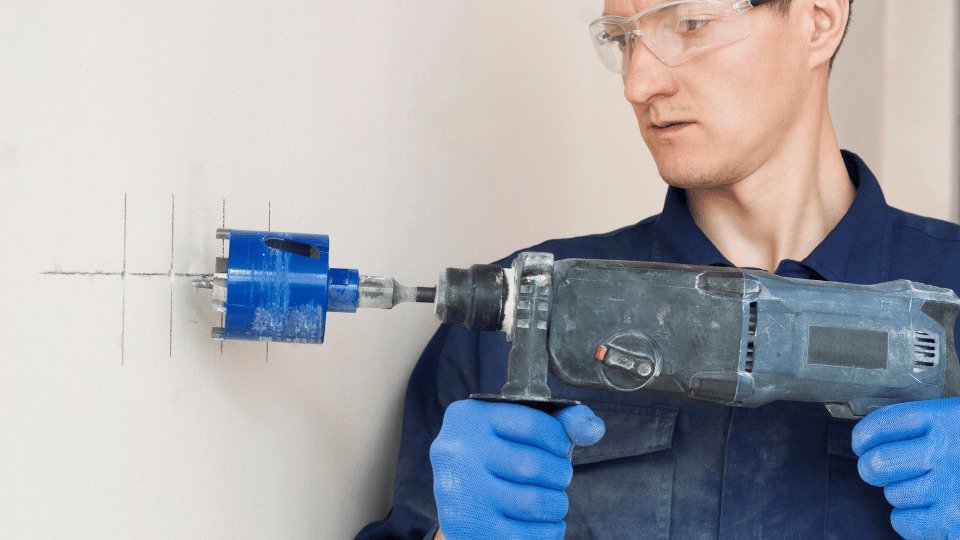
In the construction industry, experts use the concrete coring procedure as a crucial technique for extracting cylindrical cores or samples from concrete structures, including walls, floors, ceilings, and pavements.
This process uses a specialized tool called a core drill, which comes equipped with diamond-tipped cutting tools.
You may wonder why we specifically choose diamond-tipped tools for this task.
The reason lies in the remarkable hardness and durability of diamonds, which make them ideal for cutting through tough materials like concrete.
The core drill securely attaches the diamond-tipped bits and rotates them at high speeds, effectively grinding away the concrete as they penetrate the surface.
With the use of diamond-tipped tools and a careful approach, core drilling offers a reliable and effective means of examining concrete structures while maintaining their integrity.
It allows engineers, architects, and inspectors to gather essential information about existing structures, perform necessary tests, and make informed decisions regarding repairs, renovations, or new construction projects.
Now that we know what core drilling is, let’s learn more about its applications. There are several situations where concrete coring comes in handy.
One common application is in construction projects where the integrity and strength of the concrete need to be assessed.
By extracting a core sample, engineers and inspectors can examine the concrete’s composition, look for any signs of deterioration or damage, and determine if it meets the required specifications.
Concrete coring is also beneficial when examining existing structures.
Let’s say there’s a building with a suspected issue, such as concrete degradation or cracks. By extracting core samples from the affected areas, experts can analyze them to identify the root cause of the problem.
This helps in planning and implementing appropriate repairs or maintenance strategies.
In construction projects, moreover, it’s crucial to ensure that the concrete used meets the required strength and durability standards.
By extracting core samples, concrete can be analyzed for compressive strength, moisture content, chemical composition, and other properties to ensure compliance with design specifications and industry standards.
Core drilling is commonly used to create holes in concrete walls, floors, and ceilings for the installation of plumbing pipes, electrical conduits, and HVAC systems.
These holes allow for the passage of necessary utilities while maintaining the structural integrity of the concrete.
Concrete coring is also used in situations where new installations or modifications are planned within existing concrete structures.
For instance, if you want to install a new plumbing line or add electrical conduits, coring provides a way to create precise channels without damaging the surrounding concrete.
Core drilling also facilitates the installation of anchor bolts for securing heavy equipment or structures to the concrete.
In situations where concrete structures or elements need to be demolished or removed, core drilling is used to create precise openings for demolition charges or to cut and remove concrete sections.
This controlled method helps minimize damage to surrounding areas and enhances safety during the demolition process.
Furthermore, core drilling is used in the installation of sewer and drainage systems in concrete surfaces.
It helps in creating access points, cleanouts, or tie-ins for connecting pipes to the main sewage or drainage network.
We have discussed about core drilling and its benefits.
However, to truly understand its ins and outs, you need to familiarize yourself with the process.
Here is all you need to know about it:
Concrete coring works by using a specialized core drilling machine to create cylindrical openings or cores in concrete structures.
Concrete core drilling requires the use of a diamond concrete drill bit. These drill bits consist of steel tubes that are embedded with industrial diamond pieces.
The diamond provides the necessary hardness and abrasiveness to effectively cut through concrete.

To perform the drilling, the diamond core drill bit is mounted onto the shaft of the drilling machine. It is then securely attached to the structure that needs to be drilled into.
The drilling machine provides the power and rotational force required for the drill bit to penetrate the concrete.
During the drilling process, as the diamond core drill bit rotates at high speeds, it grinds away the concrete material, creating a hole. The drill bit is designed with a hollow center, which allows for the collection of the concrete “slug” or core.
Once the drilling process is complete, the core drill bit is carefully removed from the hole. The core of concrete can then be extracted from the drill bit.
This core is essentially a cylindrical sample of the concrete that was drilled, and it retains the shape and characteristics of the surrounding structure.
The extracted cylindrical shaped core sample can now be examined and analyzed to assess the stability, composition, and strength of the concrete and the overall structure.
Companies like Souffront specialize in concrete scanning services, guaranteeing accurate detection of any hidden objects or structural elements within the concrete.
You might also like to read: The Ultimate Guide to Concrete Loading Dock Repair
Concrete coring offers several benefits in various applications. Here are some of the key advantages of concrete coring:
It provides accurate and clean holes, ensuring precise measurements and minimal damage to the surrounding concrete.
This is crucial when you need to maintain the structural integrity of the concrete while creating openings.

Core drilling allows for the extraction of samples for testing purposes.
For instance, engineers may need to analyze the strength or composition of the concrete in a building to ensure its stability or assess its condition for repairs or renovations.
By drilling cores, they can extract samples and examine them in the lab with relative ease.
Important Note: It is crucial that all the core drilling codes and specifications are met to get reliable results.
Concrete coring allows for non-destructive testing of existing concrete structures.
Engineers and technicians can evaluate concrete strength, durability, and composition non-destructively through core samples, avoiding significant damage.
This enables informed decision-making regarding repairs, renovations, or new construction projects.
Core drilling is a relatively quiet and dust-free method compared to alternative techniques like using a jackhammer or other heavy equipment.
This makes it more suitable for indoor applications, where noise and dust can be major concerns.
You might also like to read: Concrete Sewer Pipe Repair: The Ultimate Guide to Fixing Your Sewage System
When it comes to concrete core drilling, Souffront Construction & Engineering (SCE) stands out as a trusted and reliable partner.
At Souffront, we take pride in our team of skilled professionals who have extensive experience and expertise in concrete core hole drilling. Equipped with advanced technology and cutting-edge equipment, our team ensures efficient and precise drilling with minimal disruption to your project.
Contact us today and let our experienced team assist you in achieving precise and efficient drilling, providing the foundation for the success of your construction project. Also, we are the most experienced 40-Year Recertification Inspection inspectors.